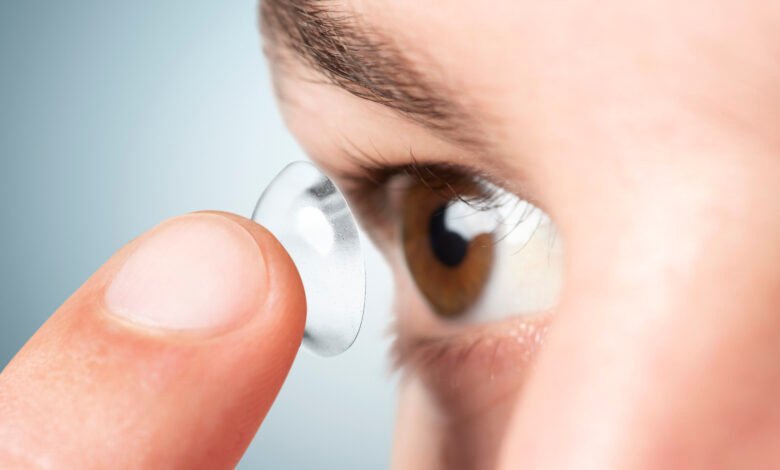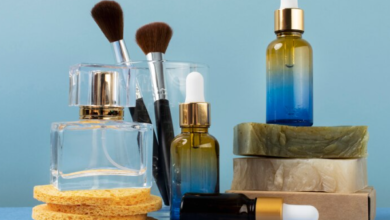The Safest Way to Put in Contact Lenses: A Step-by-Step Guide

Contact lenses are a fantastic alternative to glasses, offering a clearer field of vision and freedom in activities. However, improper handling can lead to discomfort or even infections. By following a safe and hygienic routine, you can ensure your eyes remain healthy and your lenses last longer. Here’s a detailed guide to safely putting in contact lenses.
1. Wash Your Hands Thoroughly
The foundation of safe contact lens use is cleanliness. Wash your hands with unscented, antibacterial soap. Avoid soaps with oils or fragrances, as they can transfer to the lenses and irritate your eyes. Dry your hands with a lint-free towel to prevent any debris from sticking to your lenses.
2. Prepare Your Workspace
Ensure you’re in a clean, well-lit area. Place a towel or soft cloth under your lens case to catch any lenses if they fall. A mirror at eye level can help you see clearly as you work.
3. Inspect the Lens
Before inserting a lens, inspect it for damage. Hold it on the tip of your finger and check for tears, cracks, or debris. A damaged lens can harm your eye, so discard any lens that isn’t in perfect condition.
4. Check the Lens Orientation
A correctly oriented lens should look like a smooth cup with edges that curve inward. If the edges flare outward, the lens is inside out. Place it on your fingertip and hold it up to the light for better visibility.
5. Rinse the Lens
Rinse the lens with fresh, sterile contact lens solution to remove any dust or particles. Never use tap water or saliva, as they can introduce bacteria or harmful microorganisms.
6. Insert the Lens
Follow these steps for safe insertion:
- Step 1: Place the lens on the tip of your dominant index finger.
- Step 2: Use the middle finger of the same hand to pull down your lower eyelid gently.
- Step 3: With your other hand, lift your upper eyelid to prevent blinking.
- Step 4: Look straight ahead or slightly up and slowly place the lens onto the white of your eye or directly onto the cornea.
- Step 5: Once the lens is on your eye, release your eyelids and blink a few times to center the lens.
7. Repeat for the Other Eye
Follow the same process for the other eye, ensuring you use the correct lens for each eye if your prescription differs.
8. Adjust and Center the Lens
If the lens feels uncomfortable or is off-center, close your eye and massage it gently through the eyelid. Alternatively, use your fingertip to reposition the lens by looking in the opposite direction and sliding it into place.
9. Dispose of or Store Your Lenses Properly
If you use daily disposable lenses, discard them after use. For reusable lenses, clean them thoroughly with a multipurpose lens solution and store them in a clean case. Never reuse old solution.
Additional Tips for Safe Contact Lens Use
1. Always Follow Your Eye Care Professional’s Instructions
Your optometrist will provide specific guidance tailored to your lens type and prescription. Adhere to their advice to prevent complications.
2. Avoid Overwearing Lenses
Wearing lenses beyond their recommended duration can deprive your eyes of oxygen, leading to discomfort or long-term damage. Follow the usage schedule provided by your optometrist.
3. Never Sleep in Contact Lenses (Unless Approved)
Sleeping in lenses not designed for overnight use increases the risk of eye infections. If your lenses are approved for extended wear, consult your eye doctor for safe practices.
4. Replace Your Lens Case Regularly
Lens cases can harbor bacteria. Clean your case daily with contact lens solution, air dry it, and replace it every 1-3 months.
5. Avoid Water Exposure
Water can contain harmful microorganisms. Avoid wearing lenses while swimming or showering unless you use waterproof goggles.
Signs of Trouble
If you experience redness, pain, blurry vision, or excessive tearing, remove your lenses immediately and consult an eye care professional. These could be signs of an infection or lens intolerance.
Conclusion
Using contact lenses safely is all about maintaining cleanliness, following proper techniques, and adhering to professional advice. By establishing a hygienic routine and staying alert to potential issues, you can enjoy the benefits of contact lenses without compromising your eye health. Always prioritize safety and consult your optometrist with any questions or concerns.




